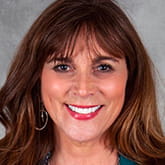One of the hardest things about introducing innovation or change in any ecosystem is getting people to buy in. This is especially true in health care, in my experience.
It’s clear that even as innovation brings unprecedented positive benefits, it also threatens old ways of regulating industries, running a business, and making a living. History has proven this to be true. The early cars weren’t allowed to go faster than horses, DVDs replaced VHS tapes, and the list goes on. New technology can even upend social norms: consider how dating apps have transformed the way people meet.
I was fortunate to be part of this transformational and technological revolution twice. The first time was during sweeping reform of our financial system while I was working for Citicorp in the 1980s. Consumer banks were only allowed to operate within the state where they were licensed. Remember Main Street and community banks? Back then, there were no interstate banking agreements. This meant state by state regulations had to change. This meant lobbying lawmakers to see the benefits of opening state lines, so consumers could be better served.
Right out of college, I was thrust into the role of public affairs officer for Citicorp in Arizona.
The historical timeline goes like this: get the state legislature to pass interstate banking with California first. Then buy some banks to expand beyond New York. Work with key stakeholders and other banks to create a standard for data sharing. This included alignment with many competing banks. Protect consumer’s privacy and financial information. Use an identifier for each consumer—the social security number, then add technology. Finally, introduce the first interstate ATM network to create access to funds across state lines.
At that time, understanding the technology of a machine giving consumers money from their account was puzzling and even frightening.
Now it’s the norm.
Does this all sound familiar?
Look at healthcare reform today. True it’s a little more complicated, but the patterns of people resisting change are woven into the fabric as we slowly move forward.
As healthcare organizations and providers are being pressured to lower costs, reduce medical errors, and adopt both standardized processes and new innovations, providers are being asked to give up established and comfortable ways of working. They are having to spend more time on documentation, see more patients in a day, and use unfamiliar processes and tools. For many staff, physicians, and nurses, these changes mean less time healing patients and fostering wellness—the reasons they became healthcare professionals in the first place. Naturally, many start to question the direction of their organization, as these new behaviors and practices appear to conflict with the values of their profession.
I’ve been in healthcare IT for nearly 20 years—well before Meaningful Use or the growing adoption of EHRs. In my early start, I was working for a Health Information Exchange (HIE) company, back then we called them RHIOs, or Regional Health Information Organizations. These were poorly funded with little governance or stakeholder adoption. Yet the foundation they would eventually pave created the continuity of care that we are all still hoping will become more seamless within our healthcare ecosystem.
From there, I went to Allscripts, where my team worked with President Obama, well before he was elected, to create the framework that moved the adoption of EHRs into a mainstay of how healthcare providers are managing their systems and practices. That highway is becoming well paved, and strong competitors are dominating the space.
Now we are at another crossroad. Providing data at our fingertips to provide meaningful insights into how we should treat our patients—what patients need greater attention, what treatments are working, and what practices should be the standard of care. Through genomics, social determinants of health, and personalized medicine, we can offer care pathways that are likely to have better outcomes for patients.
Patients are also becoming more aware consumers who are often healthy now and want to stay that way. Caregivers are getting more involved in their love one’s treatment and outcomes.
As you can see by these examples, often a nexus exists between industry disruption and acceptance, whether in the banking industry in the 1980s or the healthcare industry today. Looking back, people often think “how did we live without these advances”?
It is my hope that because of these recent advances in healthcare, a new generation of patients and providers will be the next wave of pressure to innovate, proving that we can achieve even greater results when we have educated, engaged, and empowered patients and caregivers.
Meet NextGen Ambient Assist, your new AI ally that generates a structured SOAP note in seconds from listening to the natural patient/provider conversation.
Read Now